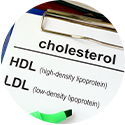It is the opinion of many surgeons that there is an epidemic of unneeded breast cancer surgery. Let’s get to the research:
In December 2018, published in the journal Gland surgery, (1) surgeons at two of the nation’s leading cancer research centers, Montefiore Einstein Center for Cancer Care in New York and the Norma J. Vinger Center for Breast Cancer in La Crosse, Wisconsin, wrote this:
“Addressing (the problem of very high rates of re-operation lumpectomy) for breast cancer in 2015, the American Society of Breast Surgeons convened a multidisciplinary consensus conference, the Collaborative Attempt to Lower Lumpectomy Reoperation Rates (CALLER). The CALLER conference endorsed a “toolbox” of multiple processes of care for which there was evidence that they were associated with fewer reoperations.
The awareness of these high reoperation rates have led to the descriptors of “over surgery”, “epidemic”, “over treatment” and “disutility.”
What caused this epidemic in surgery? Margins. If you are breast cancer survivor you know what margins are.
Clear or negative margin – no cancer cells were observed in biopsy at the edge of the tumor, the margin. It is thought that the surgery “got it all.”
Close margin – cancer cells were close to the edge of the margin – this may require another surgery
Positive margin – the cancer cells appear on the edge of the tumor – more surgery is needed.
To quote the above research: “In eligible patients, oncoplastic lumpectomy, even in patients with large tumors, and/or neo-adjuvant chemotherapy, may help to achieve higher rates of breast conservation, lower rates of reoperation, and improvements in cosmetic outcomes.”
What the doctors here are saying is that there are ways to help the breast cancer patients BEFORE the initial surgery to get the cancer cells away from the edge of the tumor. This will help a woman avoid re-operation and conserve breast tissue. In our cancer support program we address these concerns with the patient and provide possible support therapies.
The concern is, is that the surgeons are trying to conserve the breast at a cost of slowly cutting out pieces of it. This type of “conservative,” care treatment has been called into question in follow up research published in October 2020.(2) Published in the medical journal Breast, surgeons analyzed the role of repeated breast surgery after breast conserving surgery. They too came to the conclusion that there is a need to reduce these surgeries. How can they reduce the surgeries? Margins. Here is what they said:
“Repeated breast surgery rate can be reduced by shaving of cavity margins. . .The value of Repeated breast surgery as a quality indicator should be scrutinized.”
A quality indicator is considered a measurable standard of care. A treatment that is used as a quality indicator helps doctors determine effectiveness of treatment and help plot a patient’s treatment or surgical path. In this study repeated breast surgery should be looked at and reassessed as part of a plan to “help,” breast cancer patients.
Reducing surgery is the goal, replacing surgical treatment with unnecessary chemotherapy and radiotherapy is not
Let’s discuss recent research also published in the medical journal Breast (3) from doctors at Royal Marsden Hospital UK and Uppsala University Hospital in Sweden. The title of this research is “Over Surgery in Breast Cancer.”
“Breast surgery remains the original and most effective ‘targeted’ therapy: excision of early cancer is curative and for more advanced disease surgery improves local disease control.
However in well intentioned pursuit of cure and local disease control, some cancers are over-treated (with surgeries that may not be necessary) resulting in major physical and emotional morbidity.
Surgeons can reduce the burden of surgery further but it is important that less surgery is not over-compensated by more radical or unnecessary systemic therapies and/or radiotherapy with their own toxicities and morbidity.
We all need to be alert to the potential drivers of over treatment and over surgery such as failure to work within a multidisciplinary team, failure to design a multimodality treatment plan at diagnosis or overuse of novel assessment technologies of uncertain clinical utility.
The doctors in this study are talking to doctors in a valiant attempt to reduce unnecessary breast cancer surgeries but warn not to replace surgery with unnecessary chemotherapy and radiotherapy.
Being part of the decision making process
The decision to go to surgery or re-surgery and the ways to prevent re-surgery needs to be discussed with your doctor. Studies have indicated that this line of communication is severely curtailed or for some patients non-existent.
This is addressed in a June 2020 study (4) with the title: “Unmet Information Needs Predict Anxiety in Early Survivorship in Young Women With Breast Cancer.” The simple message these researchers wrote in their summary conclusion: “a third of young women treated for breast cancer enter early survivorship with elevated anxiety and unmet supportive care needs.”
The more surgeries that a surgeon performed – the less information and interaction between the doctor and patient occurred
In a study from (5) doctors at the University of Michigan, published in the journal Patient education and counseling, investigators wrote:
The more surgeries that a surgeon performed – the less information and interaction between the doctor and patient occurred, leading to very little patient involvement in the decision making process. It is difficult to say whether the women in this study wanted to participate or not. If they did, they were not given the chance.
In the medical publication World Journal of Surgery, (6) doctors recommended:
“When deciding on a suitable surgical approach for women with early breast cancer, physicians could try to more clearly communicate to the women that they can choose whether or not to participate in the decision-making regarding surgical technique. An important part of patient involvement is sufficient preoperative information.”
However, when women do take the initiative, they opt towards surgery. Especially in mastectomy to remove a NON-cancerous breast.
In a study entitled: Why Are There So Many Mastectomies in the United States? (7) doctors at Memorial Sloan Kettering Cancer Center in New York suggests that evidence indicates that increasing use of mastectomy (as a preventative medical procedure) is a patient-driven trend that is most pronounced among younger, educated, and well-insured women, and reflects fear of recurrence and in some cases misunderstanding of future cancer risks.
Although satisfaction levels are generally high among patients choosing mastectomy to remove a non-cancerous breast, complications and procedure extent may be underestimated. Improved communication strategies are essential to facilitate this complex decision-making process.
At the Magaziner Center for Wellness, patients help in making cancer treatment decisions.
At the Magaziner Center for Wellness, patients help in making cancer treatment decisions. These decisions may include strengthening the healing abilities of both mind and body via a combination of nutritional therapies, meditation and lifestyle changes — including encouraging patients to avoid nicotine, alcohol, caffeine, processed foods and artificial chemicals.
Our cancer prevention, recovery and therapy program is one whose patient roster includes:
Cancer patients already undergoing conventional treatment by an oncologist or radiotherapist who wish to give themselves the added benefits of nutritional and immune-function support. These patients have reported reduced side effects and better therapeutic results while on our program.
Patients who have exhausted conventional therapies, and for whom our program offers an opportunity to improve the quality of life.
Patients who have completed traditional cancer treatment and wish to employ a preventative program designed to enhance their body’s defenses against a recurrence of the disease.
Individuals without immediate evidence of cancer but who may be at risk due to either a family history of cancer or exposure to environmental carcinogens.
Those wishing to generally reduce their likelihood of developing cancer.
References
1 McEvoy MP, Landercasper J, Naik HR, Feldman S. Update of the American Society of Breast Surgeons Toolbox to address the lumpectomy reoperation epidemic. Gland Surg. 2018;7(6):536-553.
2 Tamburelli F, Maggiorotto F, Marchiò C, Balmativola D, Magistris A, Kubatzki F, Sgandurra P, Di Virgilio MR, Regge D, Montemurro F, Gatti M. Reoperation rate after breast conserving surgery as quality indicator in breast cancer treatment: A reappraisal. The Breast. 2020 Oct 1;53:181-8.
3 MacNeill F, Karakatsanis A. Over surgery in breast cancer. Breast. 2017 Feb;31:284-289. doi: 10.1016/j.breast.2016.10.023. Epub 2016 Nov 25.
4 Barr K, Hill D, Farrelly A, Pitcher M, White V. Unmet information needs predict anxiety in early survivorship in young women with breast cancer. Journal of Cancer Survivorship: Research and Practice. 2020 Jun 8.
5 Hawley ST, Lantz PM, Janz NK, Salem B, Morrow M, Schwartz K, Liu L, Katz SJ. Factors associated with patient involvement in surgical treatment decision making for breast cancer. Patient Educ Couns. 2007 Mar;65(3):387-95. Epub 2006 Dec 6.
6 Dahlbäck C, Manjer J, Rehn M, Ringberg A. Patients Undergoing Breast-Conserving Surgery Can Benefit from the Opportunity to Participate in Choosing Their Surgical Technique. World journal of surgery. 2017 Mar 1;41(3):734-41.
7 Mamtani A, Morrow M. Why Are There So Many Mastectomies in the United States? Annu Rev Med. 2017 Jan 14;68:229-241. doi: 10.1146/annurev-med-043015-075227. Epub 2016 Aug 26.]





































Recent Comments